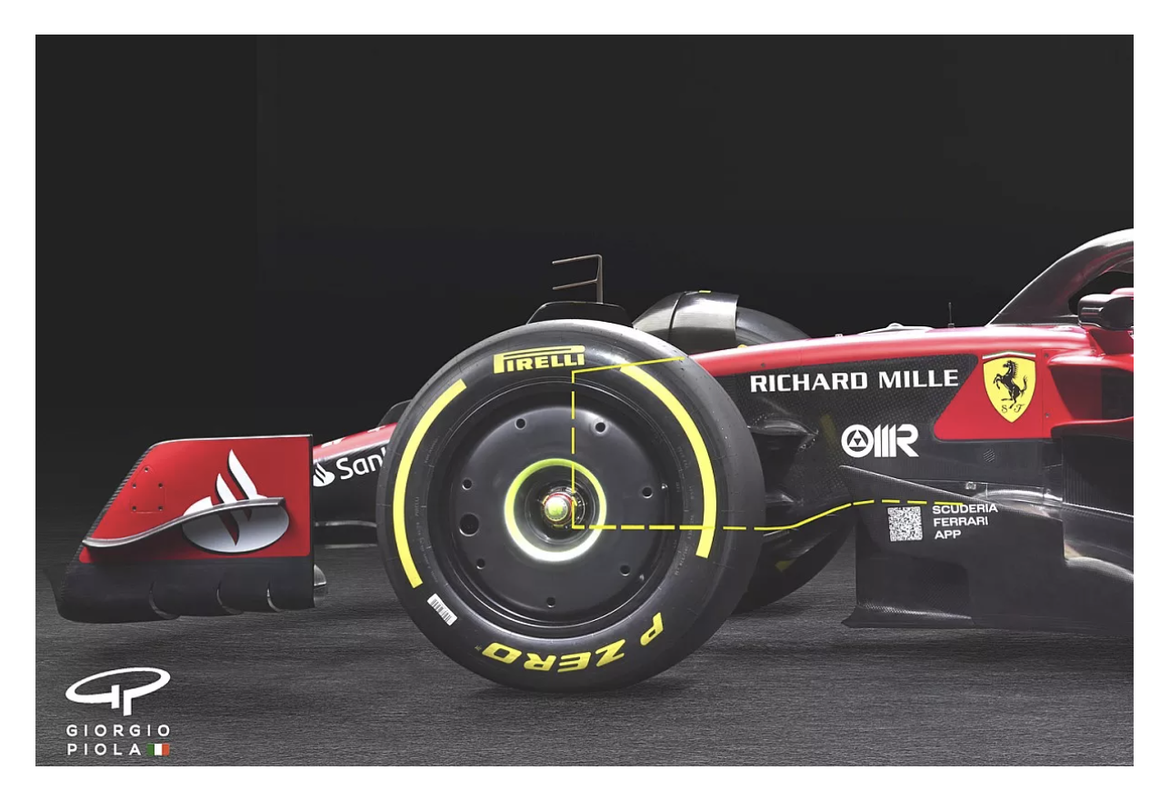Disable browser adblocker
- Login or Register
No account yet? Sign up
The article talks about how the front of the chassis has been lowered.
Yes sorry guys i thought you could access to that page...

It would make sense to make the chassis low all the way and avoid abrupt changes in geometry (both for stiffness and aero), but do we have an actual photo that shows this?
Not really, not yet... what intrigues me is this... i can't see any real difference in the upper chassis surface above the drivers' legs compared to 2022 in relation to the height of the front tyres... so, given that usually engineers try to stay within the minimum required size... is it really possible that they have increased the section of the front part of the chassis? uhmmm... I imagine that - mabye - the inferior surface section could also be U-shaped and not flat/straight... what do you think?
Yes, that's an option too. However, inverted U section would create a lot of stress on the bottom rear pickup point, so it will be curious to see what their real solution is.Giando wrote: ↑18 Feb 2023, 17:13Not really, not yet... what intrigues me is this... i can't see any real difference in the upper chassis surface above the drivers' legs compared to 2022 in relation to the height of the front tyres... so, given that usually engineers try to stay within the minimum required size... is it really possible that they have increased the section of the front part of the chassis? uhmmm... I imagine that - mabye - the inferior surface section could also be U-shaped and not flat/straight... what do you think?
But it was a solution used in 2000s, if I remember wellVanja #66 wrote: ↑18 Feb 2023, 17:20Yes, that's an option too. However, inverted U section would create a lot of stress on the bottom rear pickup point, so it will be curious to see what their real solution is.Giando wrote: ↑18 Feb 2023, 17:13Not really, not yet... what intrigues me is this... i can't see any real difference in the upper chassis surface above the drivers' legs compared to 2022 in relation to the height of the front tyres... so, given that usually engineers try to stay within the minimum required size... is it really possible that they have increased the section of the front part of the chassis? uhmmm... I imagine that - mabye - the inferior surface section could also be U-shaped and not flat/straight... what do you think?
Obviously you were right from the very beginning!Giando wrote: ↑18 Feb 2023, 16:03Yes sorry guys i thought you could access to that page...
Can i put it simple?
I wrote to Nugnes on wednesday and showed him my drawings about the front suspension/chassis subject, which you can find at pages 9, 10, 11 and 12 of this very thread.
I told him to unleash Piola and verify my hypotesis... and well, they did.
I would have appreciated a tiny mention (just... "a fellow reader of our website highlighted this and this..."), but ehi... i knew it was gonna be like that, so no problems... (not the first time actually aha).
Piola's drawing
https://postimg.cc/YvsV0qjC
Article's translation
The Ferrari SF-23 continues to show surprises and the careful analysis of the images of the presentation leads to the discovery of other innovations which are not limited only to the bypass duct which has alarmed the whole paddock.
(...)
The SF-23 showed another different approach from the F1-75: finally in Maranello have decided to work on the front suspension, while maintaining the well-tested push rod scheme. Indeed, in the image by Giorgio Piola, it is visible how the shape of the chassis has been modified in the front part.
The approach of the front has been changed more than it seems: the two triangles with carbon covers that have been specially designed to laminate the flows according to the wishes of Diego Tondi's staff, aerodynamics chief. Not only that but the suspension arms have been lowered so that the chassis is also in line with the nose which is more scooped on the sides in the lower part.
The yellow dash-line shows how the chassis rises towards the Venturi channel and the vertical intake of the bypass duct, a sign that the introduction of this concept has been evaluated with great attention in the definition of the entire front part of the SF-23.
The photograph allows us to see that the keel of the Ferrari reaches the leading edge of the tea-tray, and there is no longer the double splitter that Ferrari had immediately copied to the Aston Martin AMR22 already for the presentation of the F1-75.


Found an image from the lower SIS and i think Kyle is wrong this time. This definetely has an aerodynamic function. Ferrari didn't do it by chance, and in this high-pressure zone it's a natural choice and it would be negligent not to use it accordingly.

This view shows the blister in a generous way, almost like a wing...but it's just a lighting effect to my eye.Andi76 wrote: ↑19 Feb 2023, 00:13Found an image from the lower SIS and i think Kyle is wrong this time. This definetely has an aerodynamic function. Ferrari didn't do it by chance, and in this high-pressure zone it's a natural choice and it would be negligent not to use it accordingly.
https://postimages.org/
If they want to move sis it has to go somewhere. They wanted the undercut but didn't want to put it in the floor like RB. It's possible for it to just be an acceptable compromise for themAndi76 wrote: ↑19 Feb 2023, 00:13Found an image from the lower SIS and i think Kyle is wrong this time. This definetely has an aerodynamic function. Ferrari didn't do it by chance, and in this high-pressure zone it's a natural choice and it would be negligent not to use it accordingly.
https://postimages.org/